Carrot container gardening is a versatile and rewarding venture that allows gardeners to grow this nutritious vegetable even with limited space. By selecting the right container with adequate depth and using well-draining soil rich in organic matter, you can ensure a healthy growth cycle. It’s essential to choose carrot varieties that are suitable for container gardening and to provide them with consistent moisture and sunlight. Implementing organic pest management strategies and rotating crops can further enhance the success of your carrot container garden, yielding a bountiful harvest of crisp, flavorful carrots.
- Choosing the Right Container
- Selecting the Appropriate Soil
- Carrot Varieties Suitable for Container Gardening
- Planting and Growing Tips
- Pest Management
- Harvesting and Storing
- Conclusion
- FAQs
- 1. What is the best time to plant carrots in containers?
- 2. How deep should the containers be for growing carrots?
- 3. What type of soil is best suited for growing carrots?
- 4. How often should I water my carrot plants?
- 5. How can I manage pests organically in my carrot container garden?
- 6. When are carrots ready to be harvested?
- 7. What are some tips for storing harvested carrots?
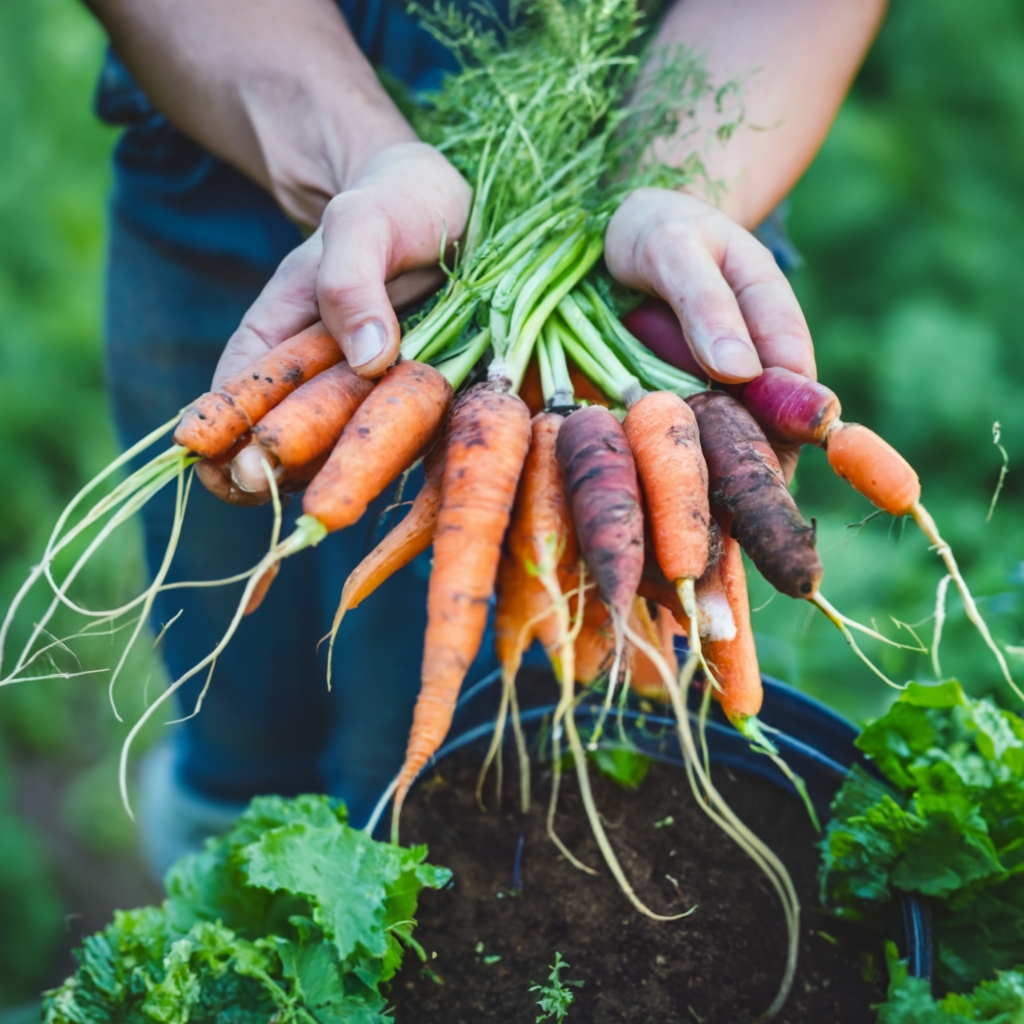
Here are just a few reasons why growing carrots in containers is a great idea:
- Space-Saving: Ideal for urban dwellers with limited garden space. You can grow carrots on balconies, patios, or even windowsills.
- Controlled Environment: Containers provide a controlled environment, allowing you to manage soil quality and prevent soil-borne diseases effectively.
- Easy Maintenance: With everything in one place, monitoring and maintaining your carrot plants become a breeze.
Handy Hint: Start with a container that is at least 10-12 inches (25-30 cm) deep to allow the carrots to grow freely and attain a good size.
Choosing the Right Container
Your container gardening adventure begins with selecting the perfect home for your carrots. The right container can make a big difference in the growth and yield of your carrot crop.
Depth and Material Considerations
Choosing a container with the right depth and material is important for growing healthy and full-sized carrots. Here are some key considerations:
- Depth: Opt for containers that are at least 10-12 inches (25-30 cm) deep to allow ample space for the carrots to grow. This depth ensures that the carrots have enough room to expand and flourish.
- Material: Containers made from materials like clay, ceramic, or wood are excellent choices as they offer good insulation and drainage properties. However, ensure to avoid materials that might leach harmful substances into the soil.
Handy Hint: When selecting a container, consider its material’s ability to retain moisture, as carrots thrive in consistently moist soil.
Handy Hints on Recycling Old Containers
In line with our commitment to sustainability, why not consider recycling old containers for your gardening project? Here are some innovative ideas:
- Old Buckets and Baskets: Transform old buckets and baskets into quirky planters. Just ensure to create drainage holes at the bottom.
- Unused Furniture: Old drawers or wooden crates can be repurposed into unique and rustic planters, adding a touch of charm to your garden.
- Discarded Kitchen Items: Items like colanders or old pots can serve as excellent containers, offering both style and functionality.
Pro Tip: When recycling containers, ensure to clean them thoroughly to remove any residues that might affect the soil quality.
Remember, the goal is to create a nurturing environment for your carrots to grow while adding a personal touch to your garden space.
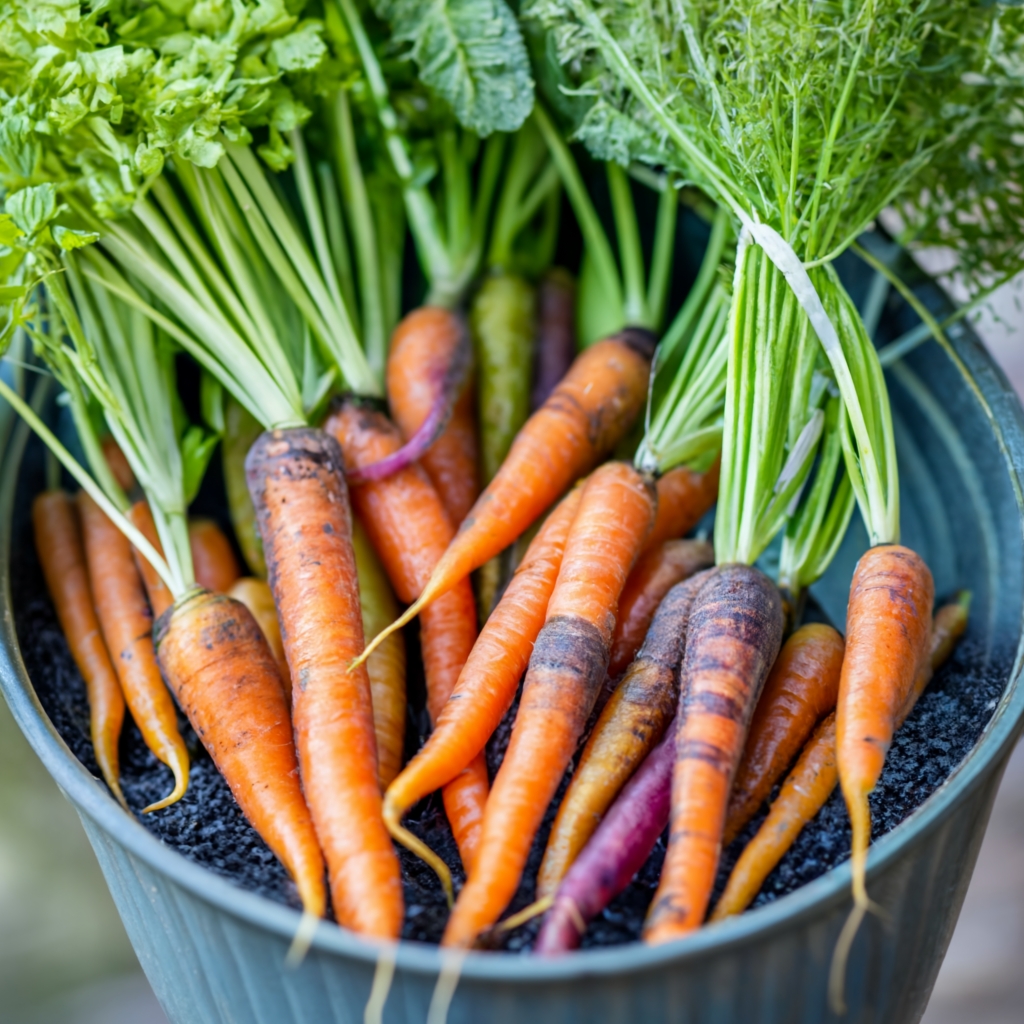
Selecting the Appropriate Soil
When it comes to growing carrots, the soil is your foundation, a nurturing ground where your carrots will take root and flourish.
Soil Preparation and Nutrient Requirements
Preparing the soil correctly is an important step in ensuring a bountiful harvest. Here are some vital aspects to consider:
- pH Level: Maintain a soil pH level between 6.0 and 6.8 to provide an optimal environment for carrot growth.
- Nutrient Balance: Ensure a balanced nutrient profile in the soil, with a higher concentration of potassium and phosphorus and a lower level of nitrogen to encourage root development over foliage growth.
- Soil Texture: Opt for a loose, well-draining soil, preferably sandy loam, to facilitate easy growth and expansion of the carrots.
Pro Tip: Regular soil testing can help you maintain the perfect nutrient balance and pH level, ensuring a healthy growth environment for your carrots.
Tips on Creating the Perfect Soil Mix for Carrots
Creating the perfect soil mix is more of an art than a science. Here are some tips to help you master it:
- Organic Matter: Incorporate well-rotted manure or compost into the soil to enhance its fertility and structure.
- Drainage: Ensure good drainage to prevent waterlogging, which can lead to root rot and other diseases.
- Rock-Free Soil: Make sure the soil is free of rocks and debris to allow the carrots to grow straight and unobstructed.
Handy Hint: To create a fluffy and light soil mix, consider adding some perlite or vermiculite to the soil, facilitating better root growth.
Remember, the secret to growing juicy and crunchy carrots lies in the quality of the soil. So, take your time to prepare it well, and you’ll be rewarded with a bountiful harvest. Happy gardening!
Carrot Varieties Suitable for Container Gardening
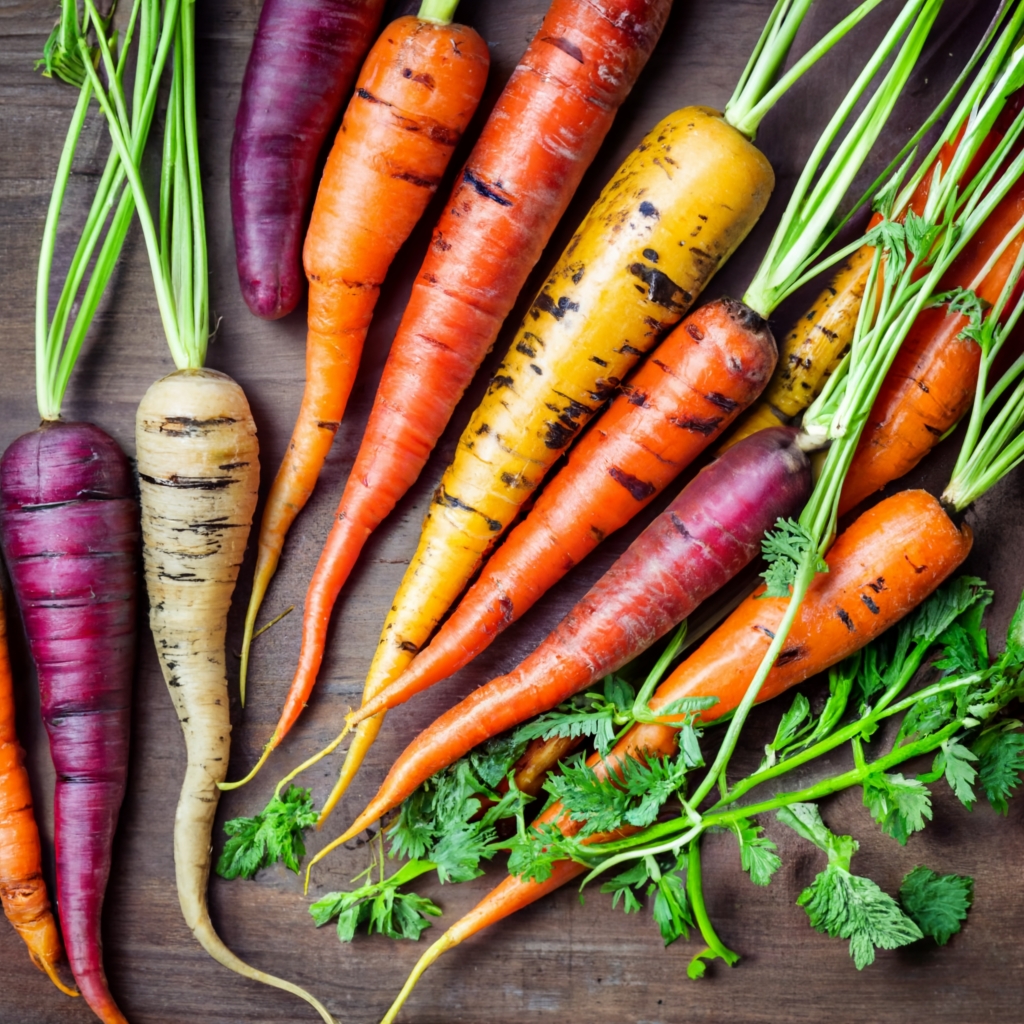
Once you have selected your container and soil, your next step is to choose the right variety that suits your region and container setup. Let’s have a quick look at the popular varieties and tips to select the best one for your garden.
Overview of Popular Varieties
There are literally hundreds of carrot varieties, each with its unique characteristics. Here are some popular choices that are well-suited for container gardening:
- Nantes: These are cylindrical, straight, and have a sweet flavor. They are perfect for containers due to their moderate size.
- Imperator 58: A longer variety, these carrots require deeper containers but reward you with a sweet and crunchy harvest.
- Chantenay: These carrots are shorter and stumpier, making them ideal for containers with limited depth.
Pro Tip: Always consider the depth of your container while selecting a carrot variety to ensure optimal growth and development.
Tips on Choosing the Best Variety for Your Region
Selecting the right carrot variety for your region is important to achieving a successful harvest. Here are some tips to guide you:
- Climate Adaptability: Choose varieties that are well-adapted to your region’s climate.
- Soil Preferences: Different varieties have varying soil preferences. Ensure to match the variety with the soil type in your container.
- Resistance to Pests: Opt for varieties that are resistant to common pests in your area to minimize potential issues.
Handy Hint: Consult local nurseries or gardening communities to get insights on the best carrot varieties for your region.
Remember, the key to a bountiful harvest lies in selecting the right carrot variety that aligns with your region’s conditions and your gardening setup. Happy gardening!
Planting and Growing Tips
Seed Sowing and Germination
Getting the seeds to germinate is the first step towards a successful harvest. Here are some tips and long-tail keywords to guide you:
- How to Grow Carrots in a Pot Outdoors: Choose a sunny spot and sow the seeds at a depth of about a quarter of an inch (0.6 cm).
- How to Plant Carrots in a Pot: Ensure the pot has adequate drainage to prevent waterlogging.
- How to Grow Carrots from Seed in a Container: Use quality seeds and follow the recommended spacing guidelines to avoid overcrowding.
Pro Tip: Soaking the seeds overnight can enhance germination rates. Remember, patience is key during the germination phase!
Plant Care and Maintenance
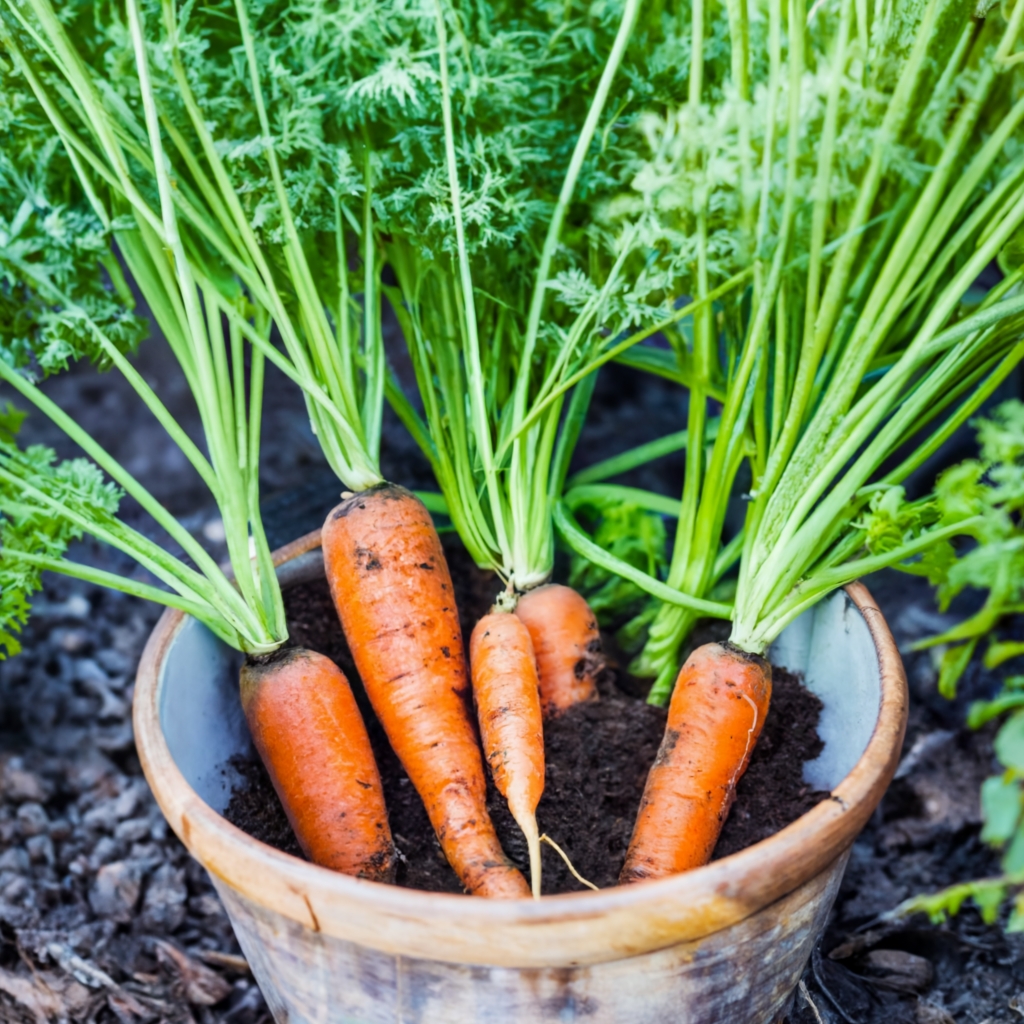
Once your seeds have sprouted, the next phase is to nurture them to maturity. Here are some guidelines and handy hints to assist you:
- Watering: Maintain a consistent watering schedule, ensuring the soil remains moist but not waterlogged.
- Fertilizing: Use a balanced fertilizer to provide the necessary nutrients for optimal growth.
- Pest Control: Keep an eye out for common pests and employ natural pest control methods to protect your plants.
Handy Hint: Mulching can help retain soil moisture and prevent weed growth. It’s a natural way to enhance your carrot garden’s health!
In conclusion, growing carrots in containers is a rewarding endeavor. By following these planting and growing tips, you are well on your way to enjoying a bountiful harvest. Happy gardening!
Pest Management
As you nurture your container-grown carrots, it’s essential to be vigilant about pest management. In this section, we delve into the common pests that might threaten your crop and how to manage them organically, aligning with sustainable and earth-friendly gardening practices.
Common Pests and How to Manage Them
Carrots can be susceptible to a variety of pests. Here, we identify some common ones and offer organic solutions to keep them at bay:
- Carrot Fly: Use physical barriers such as insect netting to prevent these flies from laying eggs near your plants.
- Aphids: Introduce beneficial insects like ladybugs to your garden, which are natural predators of aphids.
- Root Knot Nematodes: Implement crop rotation to prevent the buildup of these pests in the soil.
Tips on Organic Pest Management
Organic pest management is not just about reacting to pests but preventing them. Here are some tips to help you maintain a healthy, pest-free garden:
- Companion Planting: Grow plants that repel pests alongside your carrots, such as marigolds or onions.
- Neem Oil: A natural pesticide, neem oil can be used to deter a wide range of pests.
- Healthy Soil: Ensuring your soil is rich in organic matter can prevent many pest problems.
Pro Tip: Regular monitoring is key to organic pest management. Keep a close eye on your plants and act promptly at the first sign of pest infestation.
In conclusion, managing pests organically is a vital aspect of sustainable gardening. By adopting these methods, you not only protect your crops but also contribute to a healthier environment. Happy gardening!
Harvesting and Storing
As your carrots reach maturity, it’s time to reap the rewards of your hard work. In this section, we will guide you through the optimal times and methods for harvesting, as well as tips to store your carrots effectively, ensuring they remain fresh for a long time.
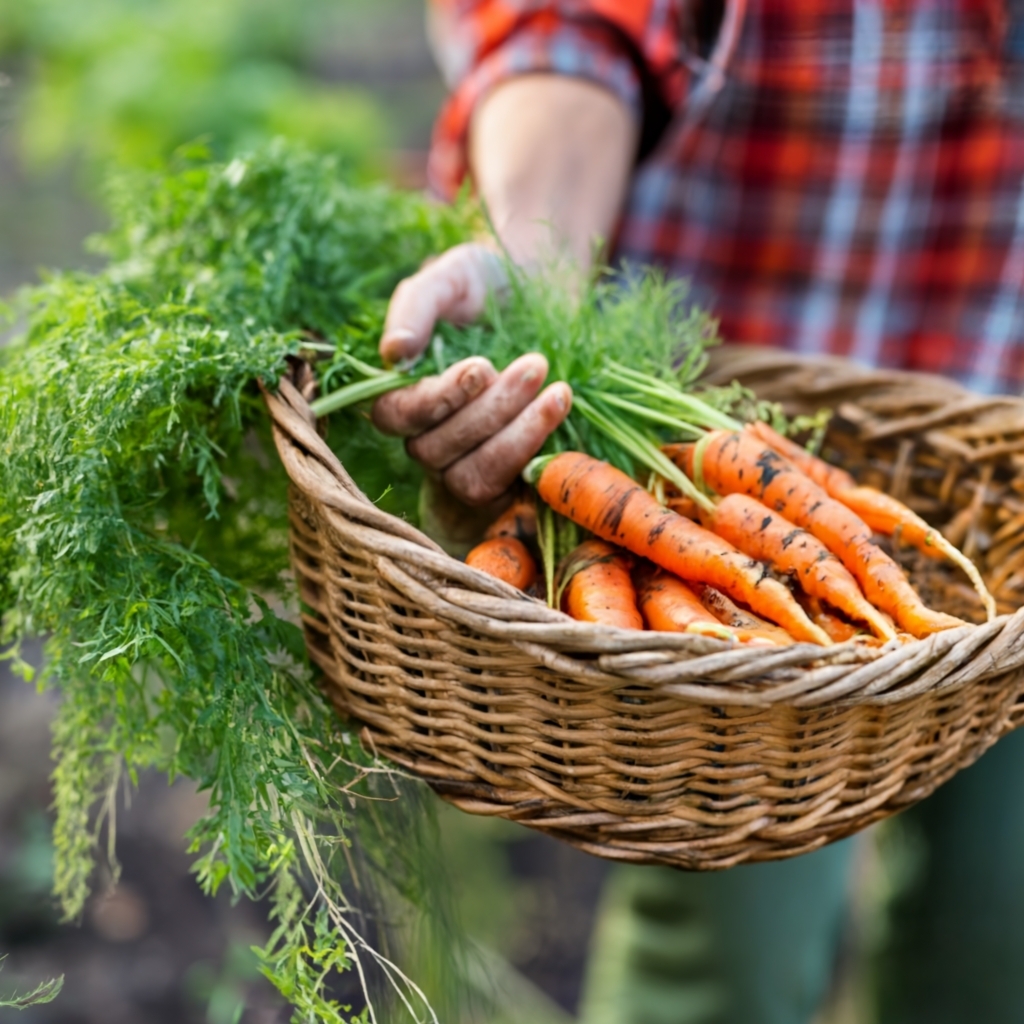
When and How to Harvest
Knowing the right time to harvest ensures that you enjoy carrots at their peak. Here are some guidelines to help you determine the best harvesting time:
- Time Frame: Generally, carrots are ready for harvest 70-80 days after planting. However, it can vary depending on the variety.
- Size: A good indicator of readiness is when the carrots are at least ½ inch (1.27 cm) in diameter at the top.
- Leaf Color: Watch for the leaves turning a vibrant green, a sign that the carrots are mature.
When it comes to harvesting, gently loosen the soil with a fork before pulling the carrots out to prevent any damage.
Tips on Storing Carrots Effectively
Proper storage is key to preserving the freshness of your carrots. Here are some tips:
- Temperature: Store carrots at a temperature of 32°F (0°C) to maintain their crispness.
- Humidity: Maintain a high humidity level, around 95%, to prevent the carrots from drying out.
- Storage Methods: Consider storing carrots in perforated plastic bags or in a container filled with moist sand.
Handy Hint: To retain the nutrients, store carrots with their tops removed, but don’t discard them as they can be used in salads or as a garnish.
In conclusion, mastering the art of harvesting and storing carrots can significantly enhance your self-sufficient gardening journey. By following these tips, you can enjoy fresh, home-grown carrots for a longer period. Happy harvesting!
Conclusion
Container gardening with carrots can be a rewarding and fulfilling experience. As we have navigated through the essential steps from selecting the right container to the joyous moment of harvesting, it’s evident that with a little effort and love, a flourishing garden is within reach.
- Choosing the Right Container: Consider depth and material, and don’t shy away from recycling old containers.
- Selecting the Appropriate Soil: Focus on soil preparation and creating the perfect mix for nourishing your carrots.
- Carrot Varieties: Choose varieties that are well-suited for your region to ensure a bountiful harvest.
- Planting and Growing Tips: Learn about seed sowing, germination, and essential plant care tips.
- Pest Management: Equip yourself with knowledge on organic methods to keep pests at bay.
- Harvesting and Storing: Master the art of harvesting at the right time and storing your carrots effectively to enjoy them for a longer period.
Pro Tip: Remember, the journey is as rewarding as the destination. Enjoy each step of your gardening adventure.
We hope this guide inspires you to take the first step in creating your very own carrot container garden. Remember, every great gardener started as a beginner. Happy gardening!
FAQs
1. What is the best time to plant carrots in containers?
Carrots can be planted in containers during the early spring or fall. Ensure to check the specific growing season in your region to achieve the best results.
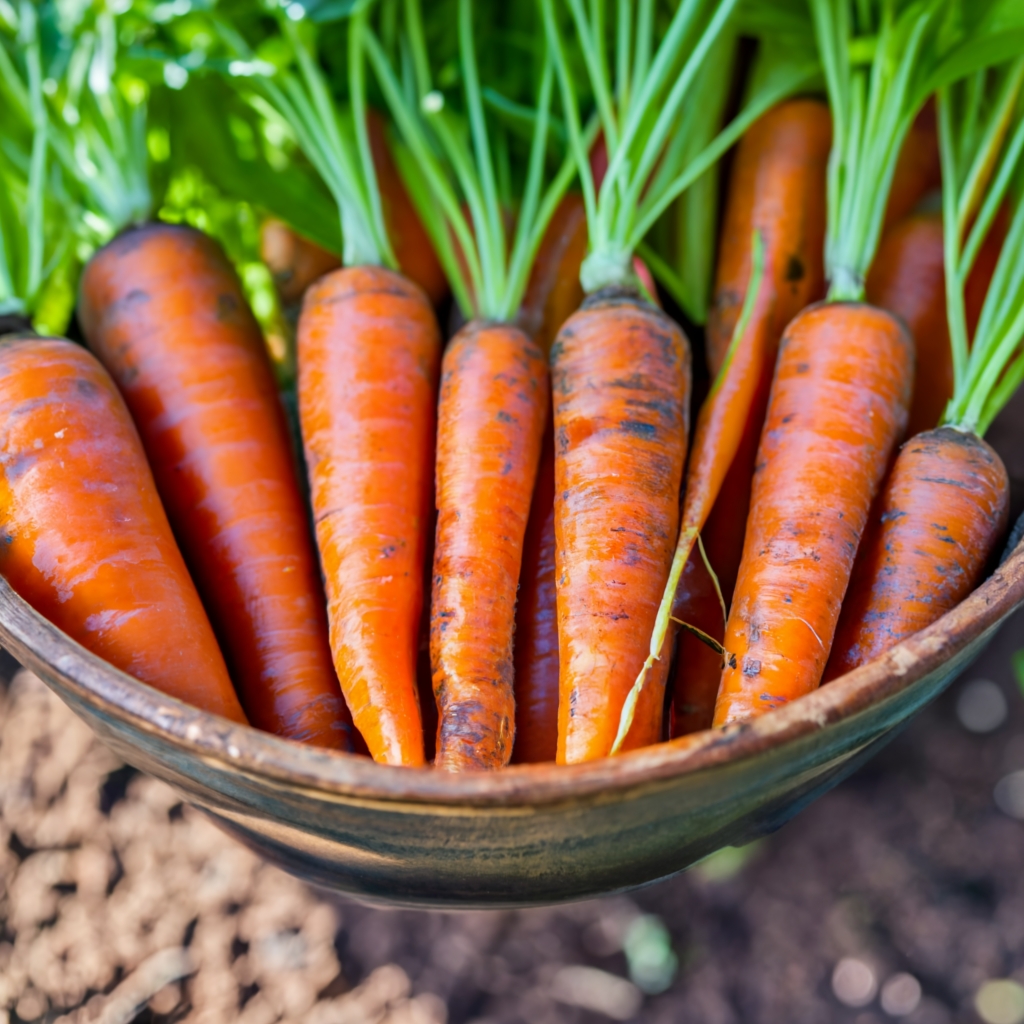
2. How deep should the containers be for growing carrots?
The containers should be at least 12-15 inches (30-38 cm) deep to allow ample space for the carrots to grow and develop. Growing carrots in raised beds is a great idea that will save your back and give you ample depth for your carrots to stretch out.
3. What type of soil is best suited for growing carrots?
Loose, well-draining soil rich in organic matter is ideal for growing carrots. Avoid heavy, clayey soils as they can hinder the growth of the carrots.
4. How often should I water my carrot plants?
Carrots require consistent moisture, especially during the germination period. It’s best to water them lightly every day or every other day to maintain the moisture level in the soil.
5. How can I manage pests organically in my carrot container garden?
Organic pest management can be achieved through methods such as companion planting, using neem oil, and encouraging beneficial insects into your garden.
6. When are carrots ready to be harvested?
Carrots are generally ready to be harvested in about 70-80 days from sowing. You can check the readiness by gently pulling one out to see if it has reached the desired size.
7. What are some tips for storing harvested carrots?
After harvesting, remove the tops and store the carrots in a cool, dark place. You can also store them in the refrigerator to extend their freshness.
Pro Tip: Remember to rotate your crops in the container garden to prevent soil-borne diseases and pests.
